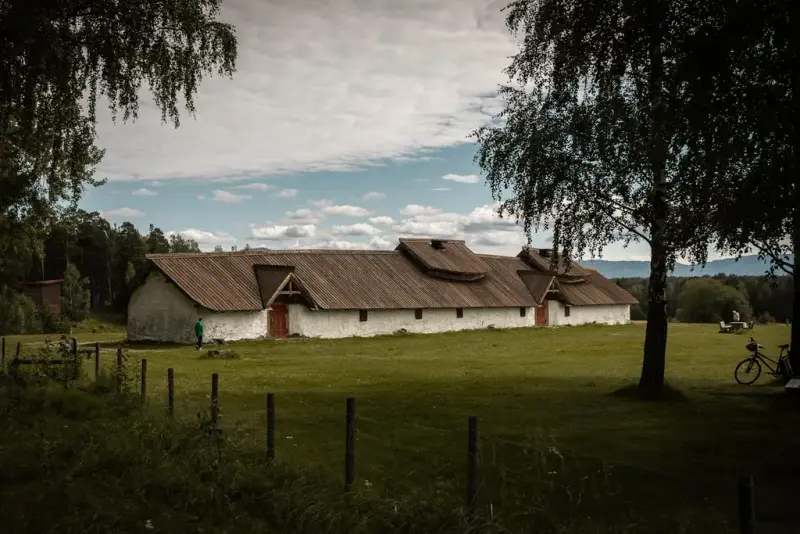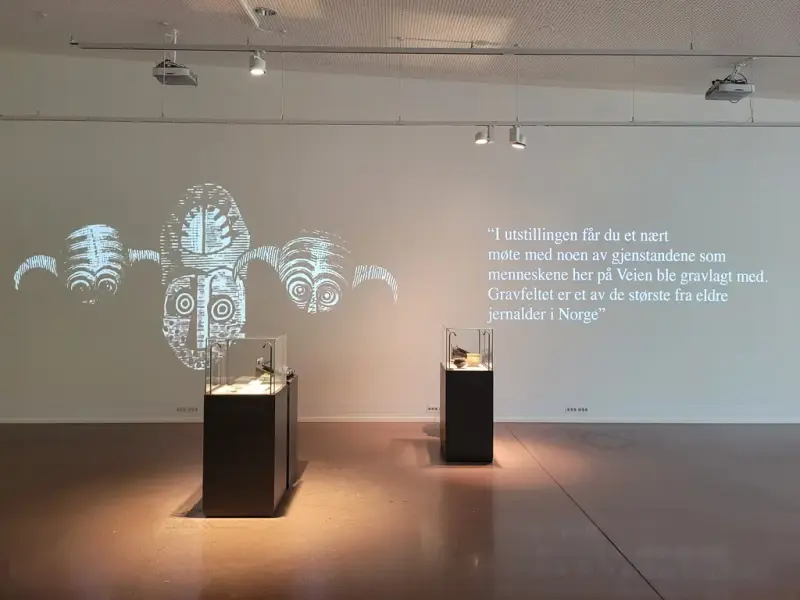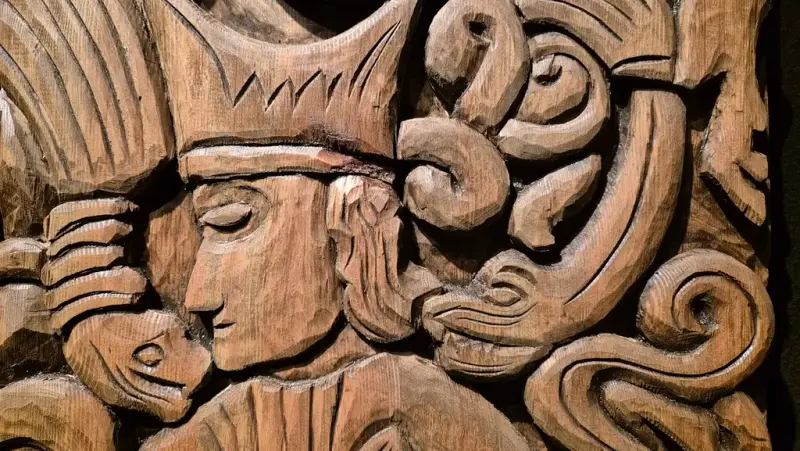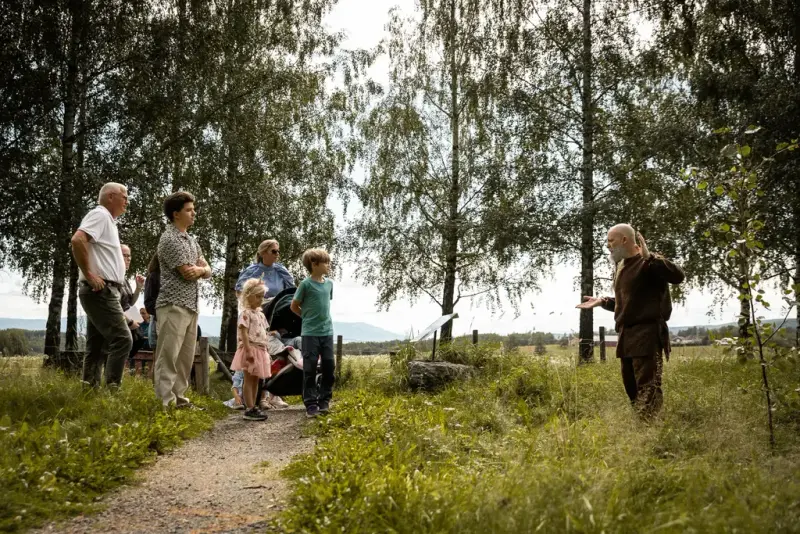
The Longhouse
2000 years ago, the original longhouse at Veien stood tall in the landscape while the Roman Empire was growing into a vast empire in Southern and Central Europe.
At this time, the longhouse at Veien was one of the largest and most powerful hall buildings in Scandinavia, and together with the burial site, it tells the story of a powerful chieftaincy.
Four longhouses have been found at Veien, and it is the largest one that has been rebuilt. The positioning of the post holes and hearths, length and width are the same as for the original house, which stood here about 2000 years ago.
The hall building at Veien is about twice the size of other longhouses dated to the same period, making it unique in Norwegian Iron Age archaeology.
During a visit to the longhouse, you will meet one of our guides, who can tell you about life in the Early Iron Age and the heyday of Veien.

The things of the dead.
The burial site at Veien is one of Northern Europe's largest from the Early Iron Age (500 BCE - 550 CE). Today, there are over 100 visible mounds.
In the exhibition, we display jewelry, weapons, and tools, glass mosaic beads, and gold rings. Many of the finds were imported from Europe and tell us that international networks existed long before the Viking Age. The exhibition highlights various ideas about humanity's relationship with life and death and the role of graves and burial practices in the Early Iron Age.
Around 90 of the burial mounds at Veien were investigated in the 19th century, most of them by Professor Oluf Rygh. Almost all of the graves are cremations. In several of the graves, jewelry, weapons, and tools were found, providing insight into the contemporary life of Iron Age people.

Hidden and Forgotten - Stories from Uvdal Stave Church
A number of objects have been discovered under the floor of Uvdal Stave Church. These finds may help shed light on the lives of the people who have used the church dating back to the Middle Ages. How did these items end up under the church floor? And why?
In 1978, archaeological excavations were conducted beneath the church floor of Uvdal Stave Church. Many objects were uncovered, having found their way down between the floorboards over several centuries, hidden and forgotten in the layers of soil.
Perhaps some items fell out of a pocket on a Sunday, such as lenses from eyeglasses, quill pens, fishing hooks, mittens, and buttons. But other items suggest a clearer intent for interaction with the supernatural as part of the relationship between sacred powers and humans. For example, several people have been buried beneath the church floor. The exhibition covers 40 square meters, the same size as Uvdal Church was when it was built at the end of the 12th century.
 NYG
NYG The Burial Site
The burial site at Veien is one of Northern Europe's largest from the Early Iron Age. In Norway, we tend to think of burial mounds and longhouses as belonging to the Viking Age, but what makes Veien special is that it was a central and important place already 1,000 years before the Viking Age!
Most of the burial mounds visible today are from the Roman period (around 0–400 CE), but we also have a few graves from the Migration period (around 400 CE) and one grave from the Merovingian period (around 550 CE).
Today, 105 burial mounds are registered at Veien, but there were even more in the 19th century. The burial site is always open to visitors, even outside the museum's regular opening hours. No ticket is required to visit the burial site.